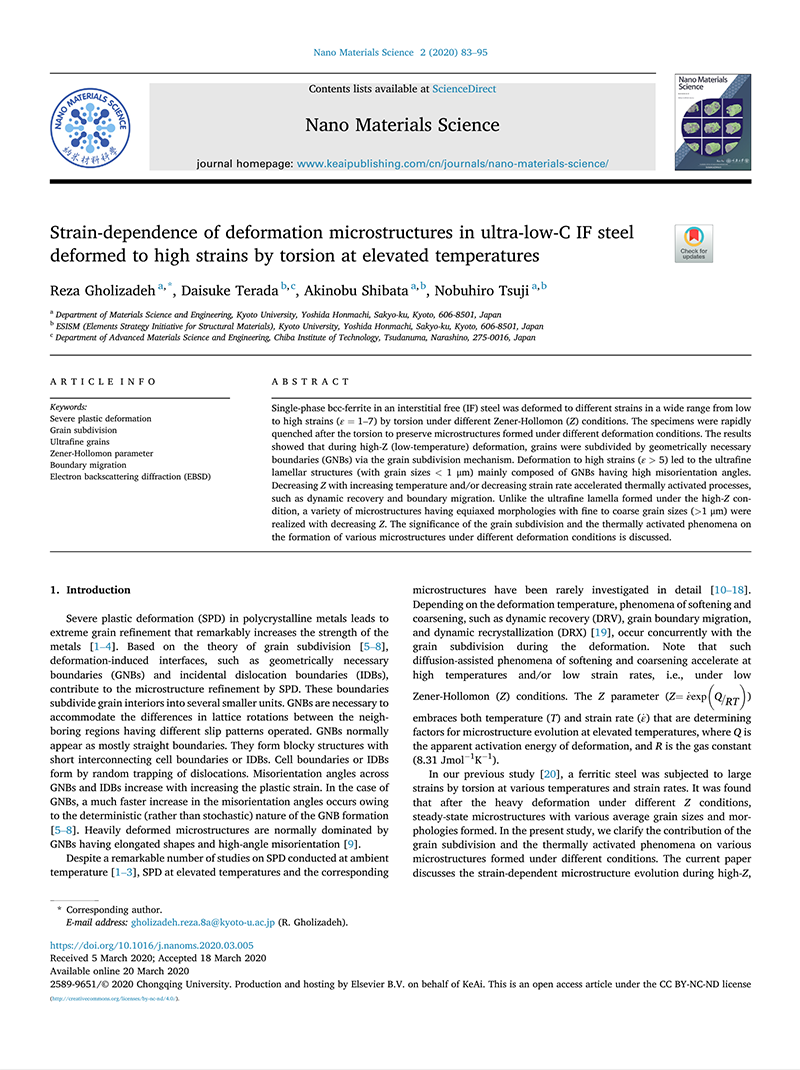Strain-dependence of deformation microstructures in ultra-low-C IF steel deformed to high strains by torsion at elevated temperatures
Nano Materials Science, 2020, 2, p. 83-95. DOI: 10.1016/j.nanoms.2020.03.005研究論文概要
Single-phase bcc-ferrite in an interstitial free (IF) steel was deformed to different strains in a wide range from low to high strains (ε = 1–7) by torsion under different Zener-Hollomon (Z) conditions. The specimens were rapidly quenched after the torsion to preserve microstructures formed under different deformation conditions. The results showed that during high-Z (low-temperature) deformation, grains were subdivided by geometrically necessary boundaries (GNBs) via the grain subdivision mechanism. Deformation to high strains (ε > 5) led to the ultrafine lamellar structures (with grain sizes < 1 μm) mainly composed of GNBs having high misorientation angles. Decreasing Z with increasing temperature and/or decreasing strain rate accelerated thermally activated processes, such as dynamic recovery and boundary migration. Unlike the ultrafine lamella formed under the high-Z condition, a variety of microstructures having equiaxed morphologies with fine to coarse grain sizes (>1 μm) were realized with decreasing Z. The significance of the grain subdivision and the thermally activated phenomena on the formation of various microstructures under different deformation conditions is discussed.
